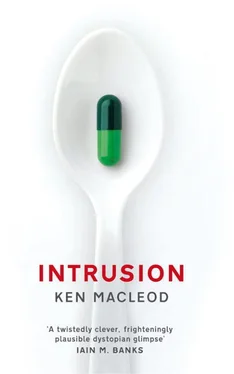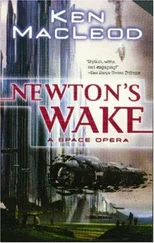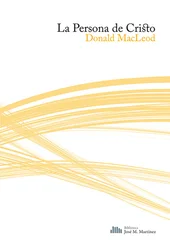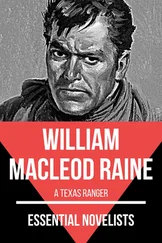‘Morning, Geena,’ he said, rubbing his hands together. ‘I’ll get the coffee on. Oh, it is on. Thanks.’
He said that every morning, without fail. Ten minutes later, in came slender, smart-suited Michael Dombrowski, lank brown hair flopping across a wide brow. He hailed her and grabbed a coffee almost with the same sweep of the arm. Geena got on best with him, ever since they’d discovered a shared taste in filthy anti-clerical jokes. A few minutes after eight, Sanjay Gupta strolled in, flashing her a smile from his Bollywood good looks. Joseph Goonwardeene, the youngest, smaller even than Geena, almost as dark-skinned as she and probably twice as bright as any of them, sidled in after him. He was the only one who wasn’t English-born and didn’t have a west London accent. Still shy after all those months he’d worked here, he barely glanced at Geena, mumbled something to Brian and sat down as if in a hurry to log on.
‘Hi, Joe,’ Geena said, hoping to get him out of it.
His right shoulder twitched. Geena shrugged, swivelled her seat and looked again at the trawl. Then she slowly spun the seat back around, still with her glasses on, sipped coffee and watched the first interactions of the day.
The SynBioTech Structural Product Research and Development Simulation Testing Environment Room Number 3, aka the dry lab, was not a big room. Its main attraction was that it had windows, overlooking the terraced cottages of Dawley Road and with a fine view of the railway line, Hayes and Harlington station, and the canal. Overhead lighting came from the undersides of broad, inch-deep suspended aquaria within which genetically modified bacteria turned cellulose into luminescence, an advertising tour de force for a product that had never cleared quite enough of the regulatory hurdles to ever need advertising. Beneath the windows a metre-deep Formica-topped shelf ran the length of the room, and the far corner of that made up Geena’s workstation. The rest of the broad shelf supported the kettle, coffee jars, and mugs, as well as thrown jackets and coats, bits of electronic equipment in various stages of assembly or dismantlement, and stacks of paper.
The centre of the room, and indeed most of the floor space, was occupied by a Formica-topped rectangular table, about the size of a dinner table, around which perhaps six people could comfortably fit, and which gave barely enough elbow- and sprawl-room to the four engineers who sat around it. Geena had access to their shared workspace, and to all but their most personal comms. Management had access to everything, so nothing that Geena saw could make the guys self-conscious in that respect; and management had long since come to accept that what people like engineers did on the job was part of the job – within reason, and so long as it didn’t include work on the side, gambling, accessing porn, talking to head-hunters, or building bombs. General idle surfing and chatting – which was usually work-relevant anyway – was accepted as necessary mental down time.
Seen through glasses, what looked like a metre-wide tangle of glistening, pulsing offal hung above the table like some obscene balloon: a realistic representation of cellular machinery on a scale where water molecules appeared as solid and pervasive as polystyrene packaging. Around this slowly writhing mass orbited phantom sheets of text and diagrams. Most of the work was done with calculations that rippled through the sheets. Now and again someone might reach in and click an atom into a different place. In response to these calculations or manual adjustments the molecular mess would squirm into a new shape.
Underneath the 3D diagram the men’s hands moved between actual coffee mugs or pen-and-paper notes to flicking through the virtual pages of newspapers or (in Joe’s case) Science Updates. At 8.25 Brian’s Daily Mail disappeared and its place was taken by one of the worksheets; and one by one Mike, Sanjay and Joe joined in. They were modifying the gene expression for lignin in a new strain of new wood. The gene itself was already artificial, having been reverse-engineered and optimised from the original stretch of plant DNA, but the effects of further modification were by no means entirely predictable in advance. This meant repeated cycles of one-step changes and virtual testing: something altogether more crude and empirical than the high-level definition of synthetic biology seemed to imply, and that at other levels – certainly in comparison with the shotgun methods of early genetic engineering – it did indeed deliver.
Geena’s research interest focused on the subtle changes in everyday practice and self-understanding this form of activity imposed on the engineers. In some respects the guys in this drylab team were becoming more like wet-lab scientists and field researchers; in others, more like programmers had been in the era – the glory days, as the old hands called that time, with a nostalgic backward glance to their youth in the nineties or earlier – when computers had become cheap and fast enough to make trial-and-error an efficient style of software development, and before structured programming and formal verification had become standard practice: before rigour had become de rigueur. The working title of her thesis was Convergent agent-constitutive discursive practices in emergent technological networks: the case of a dry-lab synthetic biology team , and the work fascinated her, though she could well see that it might not fascinate anyone else.
What it was all for – what interest, other than her own in getting a PhD, her research served – was for Geena a matter of idle and infrequent speculation. The Economic and Social Research Council was willing to sponsor it, and her tutor at Brunel, Dr Ahmed Estraguel, was willing to supervise it. That was enough to be going on with. The question of what institutional and economic and political interests actually benefited from social science research into science was itself a small but thriving area of social science research, and the question of who benefited from that research was a smaller area still. The one researcher who had taken the next logical step and investigated who benefited from research into research into research into research had concluded that the only beneficiary of his research was himself, a result so significant that its publication had ensured him a professorship at the University of Edinburgh.
Around 11.00 Geena got a message on her glasses from her friend Maya, who lived in Hayes and who worked out of an office in Station Road. As soon as she saw it, she had a bright idea, inspired by a morning’s subconscious pondering over the predicament of Hope Morrison. She set up an al fresco lunch with Maya down by the canal for 12.30.
At 12.15 she pulled on her coat, nodded to the guys, and went out. Geena usually ate lunch alone in the employee restaurant – the engineers all took in packed lunches, and she needed only the occasional sample of their lunch time conversations to keep track of the discursive practices by which they constituted themselves. This time, she bought two insulated cups of take-out carrot soup and two baguette sandwiches. The bread roll for Maya was listed as ‘vegan filled’, which amused Geena as she left. Her smile broadened as she thought how good it would be to take advantage of the first blink of sun in a month by going for a walk.
She crossed Dawley Road at the cottages and headed down Blyth Road, then turned left into Trevor Road and Printing House Lane, a canyon of factories and office blocks, to where the road crossed the canal, and picked her way down crumbling concrete steps to the canal bank. As always, the chance association of the names set off an earworm of Betjeman’s poem.
No phantom swimmers in this canal. Fringed by tall poplars, cruddy with litter and crusted with ice, the water’s only visible life was a disconsolate duck and the monstrous ripples of the ten-metre-long flexible barges of biofuel that swam beneath the surface like lake monsters. Geena walked carefully along the uneven and ill-maintained towpath for a hundred metres until Maya appeared around a bend up ahead.
Читать дальше











